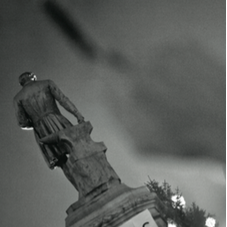
7 things you need to know about Charlie Hebdo
Understanding the controversial French weekly
On Wednesday January 7th, the French weekly satirical magazine Charlie Hebdo was attacked by armed terrorists, killing several of the magazine’s staffers.
As the world attempts to come to grips with the attack at the Charlie Hebdo headquarters and the ensuing days of confusion and violence, for many in Canada it was their first time hearing of the magazine.
As Charlie Hebdo continues to remain visible in the media spotlight, it helps to know a bit of background information about what the magazine stands for and how its international fame, and infamy developed.
1. History. Charlie Hebdo was first published in 1970, but had a long hiatus between 1981 and 1992. It has been in print as a weekly magazine for the past 23 years. Charlie Hebdo is known for being merciless about who it targets, but has received particular attention due to its portrayals of Islam and illustrations of the Prophet Mohammed, who the Muslim faith states should not be visually depicted. Stéphane Charbonnier (Charlie Hebdo’s editor, who was murdered in the recent attack), described the magazine as left-wing, secular and atheist
2. Fighting for freedom of expression. It is well known in France that no prominent figure, celebrity or idea is safe from being satirized by Charlie Hebdo. In a 2012 interview with CNN, a Charlie Hebdo staffer summarized the magazine’s goal: “the aim is to laugh…we want to laugh at the extremists—every extremist. They can be Muslim, Jewish or Catholic. Everyone can be religious, but extremist thoughts and acts we cannot accept.”
3. “Gouaille.” The Charlie Hebdo approach of satirical attacks is by no means new to French culture. In French, this type of satire even has a name: gouaille. A recent Al Jazeera article describes gouaille as “an anarchic populist form of obscenity that aims to cut down anything that would erect itself as sacred, venerable or powerful.” While Charlie Hebdo certainly took full advantage of this practice, it has been in use for more than 200 years, since before the French Revolution.
4. Portraying the Prophet Mohammed. In Islam, it is an essential belief that the Prophet Mohammed must not be visually depicted. Charlie Hebdo made a bold statement by continually printing cartoons of the prophet. In 2011, an issue was published, proclaiming to be “guest-edited” by the Prophet Mohammed and bearing the title “Charia Hebdo,” referring to sharia, the moral code of Islam. The cover depicts the Prophet, with a speech bubble saying “100 lashes if you don’t laugh.” Charlie Hebdo maintained that these were attacks on extremists, not on all members of the Muslim faith. A Globe and Mail article describes a later cover of the magazine, depicting the Prophet Mohammed crying, and bearing the headline “Mohammed overwhelmed by fundamentalists.” In the cartoon, the Prophet is shown saying “It’s hard being loved by these (idiots).”
“The aim is to laugh…. we want to laugh at the extremists – every extremist.”
5. Previous attacks. Shortly after the publication of the “Charia Hebdo” issue, the Charlie Hebdo offices were firebombed and the magazine’s website hacked. Charbonnier issued a statement, saying: “This is the first time we have been physically attacked, but we won’t let it get to us.” Although the firebombing was the first incident of physical harm against the magazine, Charlie Hebdo faced many serious instances of criticism in the past. After a decision to publish several Danish cartoons of the Prophet Mohammad in 2007, Charlie Hebdo was sued by two French Muslim groups. According to the BBC, French courts overturned the lawsuit, since “cartoons were covered by freedom of expression laws and were not an attack on Islam, but fundamentalists.”
6. Secularism in France. France has long been known for its strict rules about secularism in society, leaving very little room for extremism of any kind. Headscarves and other visible signs of religious expression were banned from public schools in 2004, and in 2014 it became illegal to wear face-covering headgear in public, including traditional Muslim garb such as the burqa. Roughly 10 percent of the population of France is of Muslim faith, the highest percentage in Europe.
7. What happens now? As millions of people gather around the world to protest the attacks on Charlie Hebdo, police officers and a Kosher supermarket that resulted in 17 deaths, Charlie Hebdo will keep on printing. A Globe and Mail article quotes Charlie Hebdo’s legal counsel, stating “the magazine’s next edition will come out Wednesday, with only eight pages instead of the usual 16, but with an increased circulation of one million, from the standard run of 60,000 copies.”






